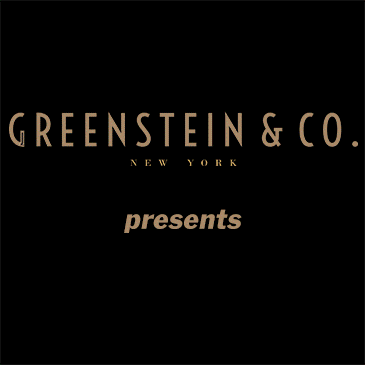
From Auschwitz to Israel: the Saga of a Long-Lost Torah
When Israeli journalist Yaakov Maor was sent to Vienna 40 years ago to write about the first stirrings of the newly founded European Economic Union, he couldn’t have guessed that the trip would result in a priceless discovery with deep personal significance.
A financial reporter for the Maariv newspaper, Maor—then in his 20s—visited the Mizrachi Synagogue daily for prayers. He piqued the interest of the rabbi, who asked him to speak to the congregation about Israel.
So he spoke about life there—about the country’s natural beauty and about the Yom Kippur War, which had recently ended. He also spoke about a group of idealistic young families who were re-establishing ancient Jewish towns on the West Bank of the Jordan River.
The synagogue’s president became excited about building communities on the ruins of cities that had been razed at the time of the destruction of the Second Temple, and expressed his desire to help. Maor phoned some friends in Israel to find out how Vienna Jewish community could assist them in strengthening the new settlements.
The answer: Torah scrolls. “Elon Moreh and Ofrah were using Torah scrolls temporarily loaned to them by synagogues in Jerusalem, which needed them back,” Maor relates from his home in Moshav Hemed. “Unless they owned their own Torah scrolls, the settlements would fall apart since proper prayer services could not be held without them.”
The synagogue president spoke with several friends in Vienna’s Jewish community. They wanted to help, too; soon, Maor found himself in a large cellar in which hundreds of Torah scrolls were stored. Small Jewish communities that once dotted the European countryside, which collapsed when their members died or emigrated, had given their Torah scrolls and other holy books to Vienna’s larger community. Over the years, hundreds of Torah scrolls had been amassed in a room below a local synagogue.
After selecting the ones he would take back to Israel, Maor turned to leave. One of his escorts stopped him, telling him about a Torah scroll written on deerskin that he should see. (Normally, Torah scrolls are written on parchment made from cowhide.) A Torah written on deerskin is valuable and most unusual since it’s difficult to acquire enough animal skin to create parchment for an entire Torah scroll.
Maor remembered that his maternal grandfather—after whom he’d been named, Rabbi Yaakov Meir Hellman of Munkatch, Hungary (presently in western Ukraine near Slovakia)—had once owned a Torah scroll written on deerskin that had been passed down in his family for generations until it was lost in Auschwitz. He was curious to see what such a Torah scroll looked like. When it was brought to him, he noted its unusually small size.
“My mother, the daughter of Rabbi Yaakov Meir, told me that her father’s grandfather was a wealthy Jewish merchant who traveled a lot,” he recalled. “So he bought a tiny Torah scroll, specially written on thin deerskin, to take with him on his travels. The chances that it was the same scroll were minute, but once I saw how small it was—as small as the scroll my grandfather carried—I decided to take a closer look.
“The man responsible for the collection had no idea how the Torah scroll got there or what its history was, but he let me look for clues to its identity to see if it belonged to my grandfather. I told the people around me that our family always said that the atzei chaim (the two dowels around which the Torah scroll is wound) weren’t made of wood, as is usual, but of copper, and so the ends of the Torah scroll had been damaged by rust, which made the rabbis in Auschwitz question whether or not it was kosher. When we rolled the scroll to its ends, where it was attached to the dowels, we were shocked to see the rust damage.”
‘The Hand of G‑d’
Maor’s breath stopped when he realized that the scroll in his hands might be his family’s lost Torah. He asked permission to look for another sign. “As far as my family knows, my grandfather was murdered on the week that the portions of Tazria and Metzora are read. So I asked to open the scroll to those portions. Who knew if we wouldn’t find some clues there?
“Large blood stains were found on those Torah portions. It was a sign that the Torah scroll had been open in exactly that place when my grandfather was killed by the Nazis. It was eerie. I still get goosebumps when I talk about it,” he said, showing me the hair standing up on his arms as his voice shakes with emotion, as if he were witnessing the discovery just then.
“It was the hand of G‑d that guided me there so I could find grandfather’s Torah. When we’d calmed down, we went above ground, where there was ayeshivah, and I recited Kaddish in memory of my grandfather.”
How did he know about the scroll, and about his grandfather’s death?
“Grandfather had a childhood friend who was with him in Auschwitz. The two were exiled together from ghetto to ghetto, and from concentration camp to concentration camp. He survived the war. He tried to emigrate to Palestine, but the British caught him and sent him to Cyprus, where he married the sister-in-law of his late friend, my grandfather, Yaakov Meir.”
The couple adopted Yaakov Meir’s three orphan daughters, one of whom became Yaakov’s mother.
“This childhood friend—now family—told his adopted daughters that their father sewed a secret pocket in his coat, which he made from the sleeve of a different coat, and in which he hid his Torah scroll, taking it with him wherever he went. When he got to Auschwitz, he was told to remove all his clothing. One of the prisoners tasked with collecting the stolen clothing for the Nazis was a Jew from Munkatch. Describing the coat and the time it was taken from him, he begged the man to take the Torah scroll from its hiding place.
“The Torah was returned to him three days later. The camp’s Jews studied it, and secretly read from it on Shabbat and holidays. Yaakov Meir managed to survive the horrors of Auschwitz, but was shot by a Nazi soldier on the death march to Germany in the last weeks of the war.
“Grandfather’s blood, sprayed on his beloved Torah when he was killed, bore silent witness to his death, but it also bore witness to his regular reading from his Torah and his living with it throughout that terrible time,” recounted Maor.
Years later, his blood was carefully sponged from the scroll by Zaka volunteers and buried in Jerusalem.
Eternal Proof of Faith
Maor was granted permission to take the scroll with him to Israel. Every year, on the holiday of Simchat Torah, he takes it from the ark he had built for it and dances with it. As far as he’s concerned, returning his grandfather’s Torah to his mother—and his emotional telling of the story to each of his many grandchildren—is the greatest and sweetest vengeance possible against the Nazis.
The Maor family had a new cover made for the Torah scroll; on it, they embroidered, in large gold letters: “You shall live by these words: And it was when the ark travelled [to] Munkatch, Auschwitz, Vienna, Ramat Gan, Kedumim, Hemed.”
The scroll will continue to accompany the Maor family from generation to generation. Even though the scroll is not kosher for Torah readings—it became unfit for use in the course of its journeys—it remains “eternal proof that we pass on, from generation to generation, our traditions, faith, connection to and love for the Torah, and knowledge of G‑d’s Divine intervention in our lives.”















Amazing story!
Thanks for sharin g
amazing
just so nice to get such a story amongst all the darkness that surrounds us. Ad mosai!!
let this bitter galus end now! I hope g-d is listening